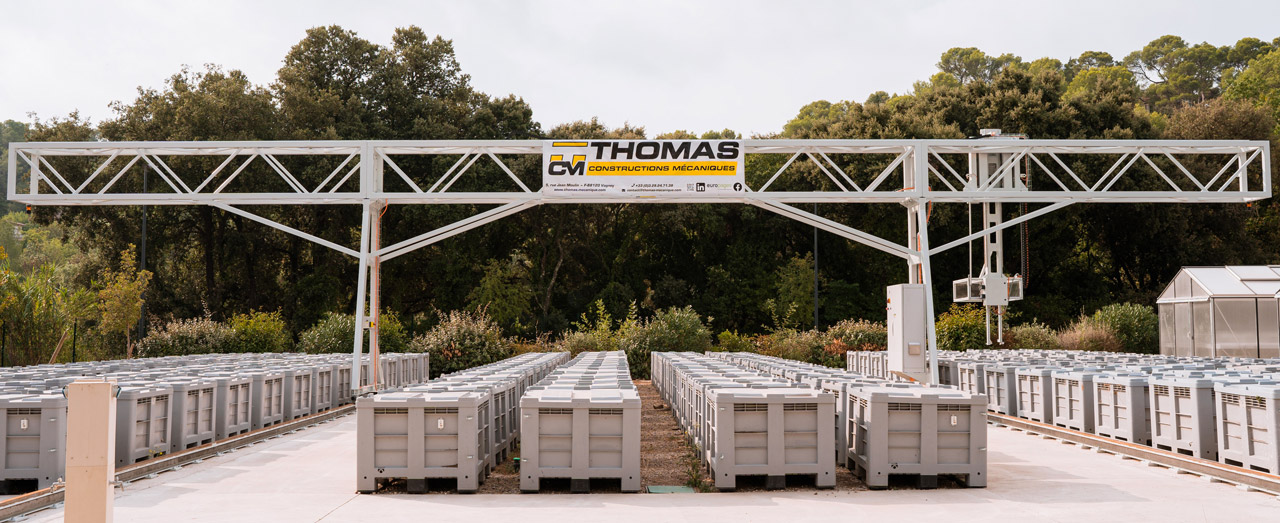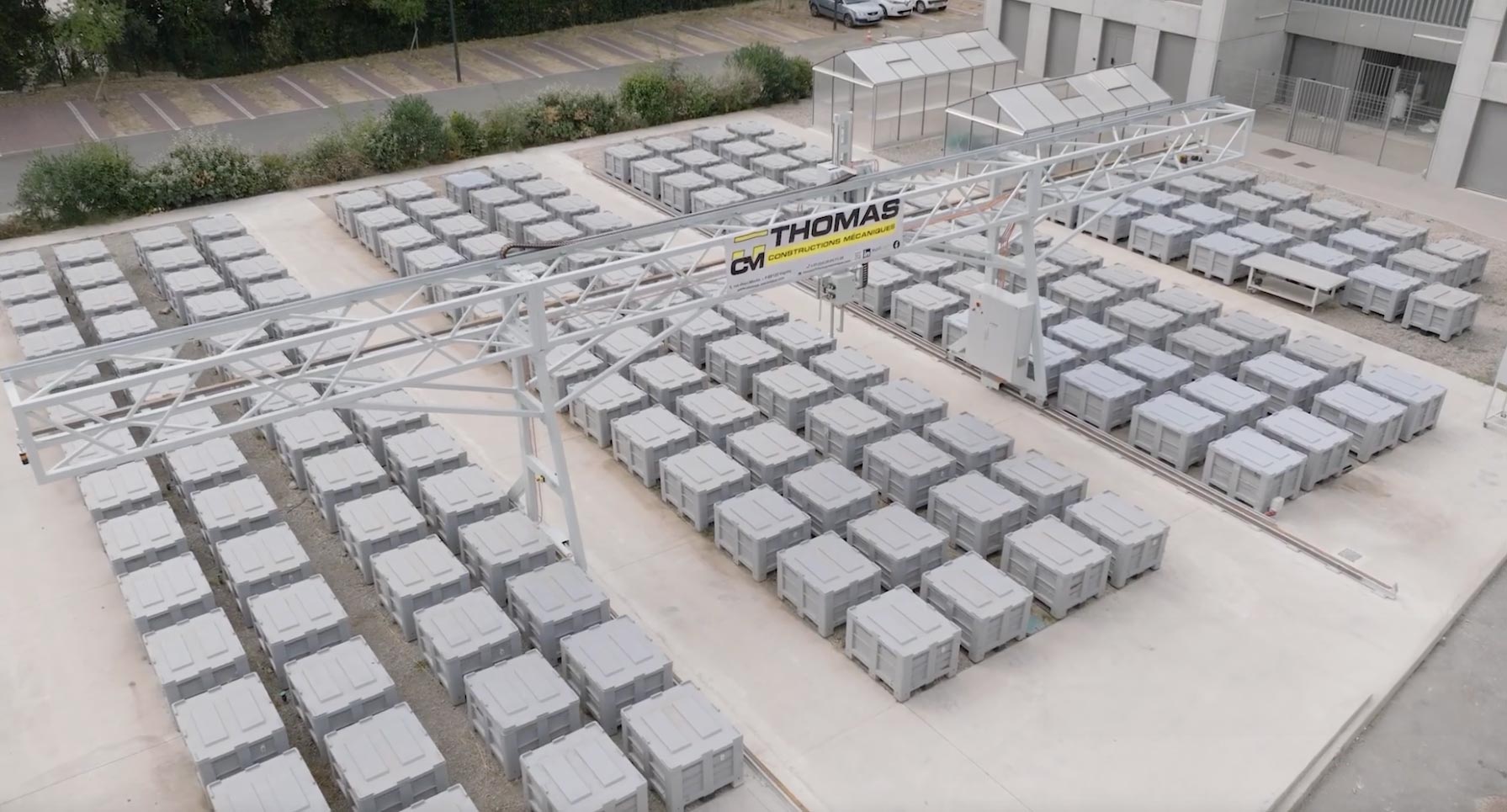
Phenotyping gantry
Our company, Thomas Constructions Mécaniques TCM, was commissioned by a renowned agricultural research institute to build a phenotyping gantry.
This plant phenotyping gantry is used to characterise plant cover based on a range of indirect methods involving non-destructive data acquisition. The gantry’s movements and data acquisition are programmed and automated.
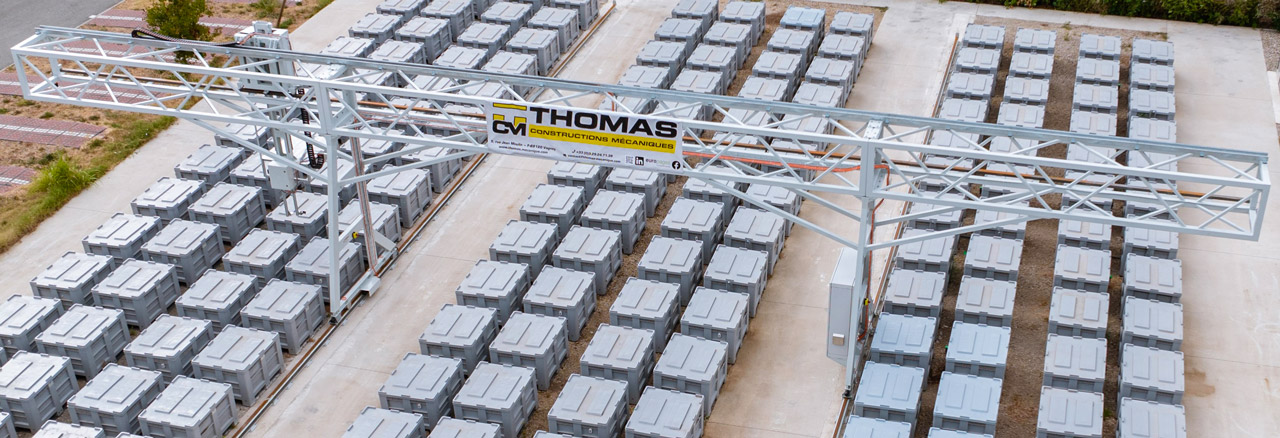 Phenotyping is conducted during the crop cycle via the gantry’s on-board sensors and data is collected using non-destructive and non-invasive methods, in order to generate and analyse information on the temporal trajectories of phenotypes
associated with the plant cover or their genotypic components.
Phenotyping is conducted during the crop cycle via the gantry’s on-board sensors and data is collected using non-destructive and non-invasive methods, in order to generate and analyse information on the temporal trajectories of phenotypes
associated with the plant cover or their genotypic components.
The structural parts of the gantry are made of tubular steel and finished with paint, after applying an anti-corrosion treatment to ensure the unit is protected against the elements.
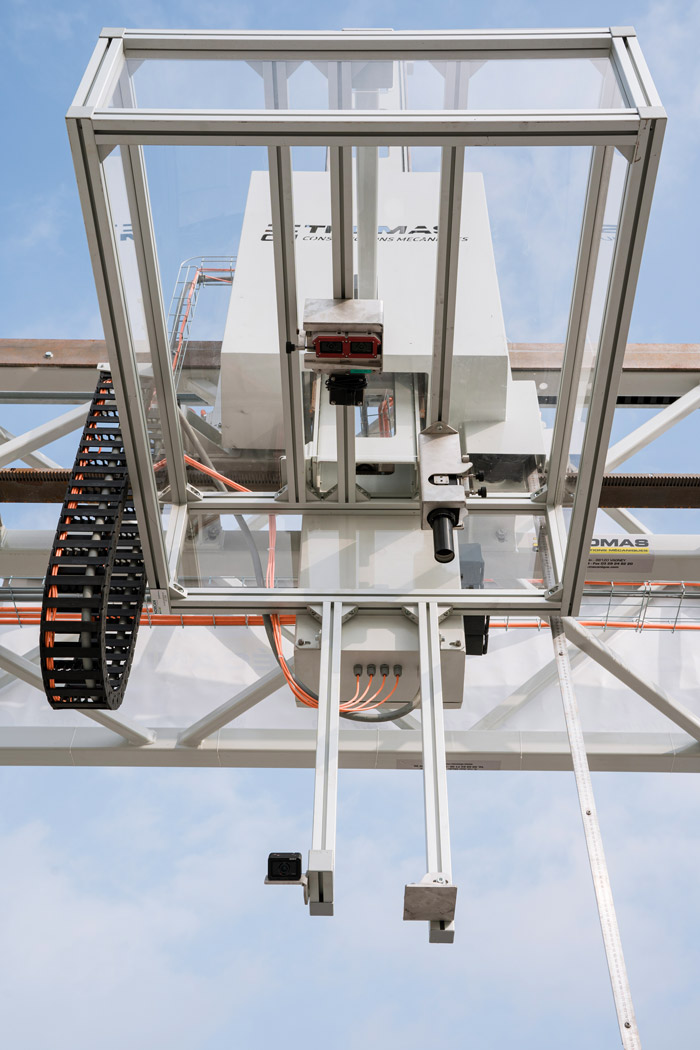 The unit spans across 168 growing trays. It moves along the X axis on rails (affixed to the ground). It is equipped with a platform positioned above the centre of each tray so that data can be collected. This platform moves along the Y axis between
rows of trays and along the Z axis (up/down). It moves and collects data using pre-programmed guidance and data acquisition systems.
The unit spans across 168 growing trays. It moves along the X axis on rails (affixed to the ground). It is equipped with a platform positioned above the centre of each tray so that data can be collected. This platform moves along the Y axis between
rows of trays and along the Z axis (up/down). It moves and collects data using pre-programmed guidance and data acquisition systems.
The images are taken at nadir, 1 metre above the vegetation, and 20 centimetres above the cover at an angle of 45 degrees in relation to the vertical axis. It has a modular system for data acquisition: data can be collected
from all or a section of the trays at time intervals selected by the operator. To this end, the gantry is equipped with an active lighting system with on-board sensors which can be positioned above each tray and operated in a standardised
way, i.e. in terms of their positioning, the lighting and data collection.
The data from these sensors can be used to infer the variables associated with the cover’s architecture, the biochemical content of the leaves and their state of health. The system is fully automated enabling the unit’s movements to be programmed and
the sensors to be activated via a human-machine interface. Using the guidance system, the gantry’s movements can be precisely reproduced between two successive data acquisition sequences.
The gantry was constructed over two successive phases:
In the first phase, its movement along the X, Y and Z axes was designed in manual mode using a wireless remote control. Two speeds are available for each movement: a high speed for long movements and a low speed for precise positioning. These two speeds
can be adjusted by programming the frequency inverters connected to the motors according to the dexterity of the operators using the gantry.
It has a mobile workstation on which the operator can place the phenotyping computers. The sensors are manually connected to the phenotyping computers by the operator using a USB or Wi-Fi cable.
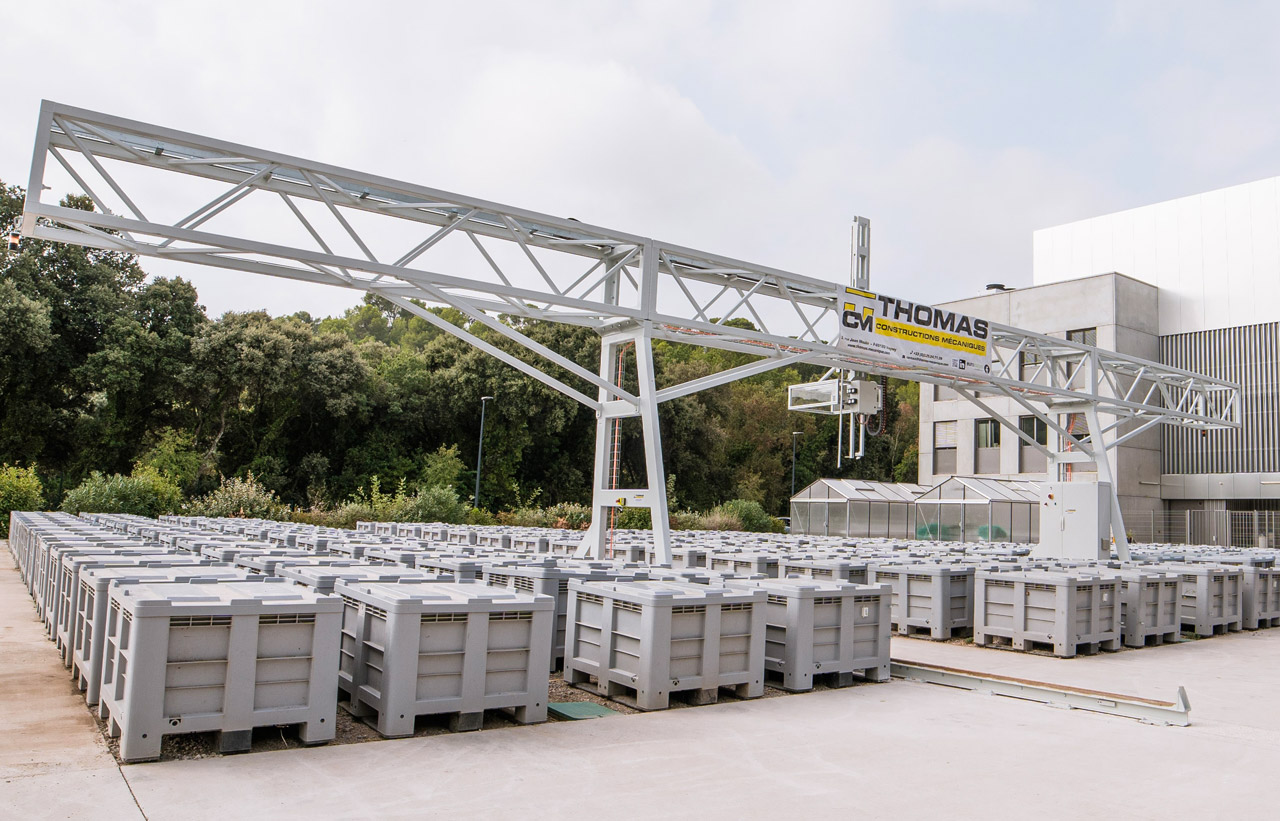 In the second phase, the growing trays were geolocated using recorded Cartesian coordinates. The movement of the bridge and the platform along the X, Y and Z axes is automatically controlled; the data acquisition sequences are programmed
via a remote desktop computer. The bridge and platform move automatically along the X and Y axes towards the target tray using the previously recorded Cartesian coordinates.
In the second phase, the growing trays were geolocated using recorded Cartesian coordinates. The movement of the bridge and the platform along the X, Y and Z axes is automatically controlled; the data acquisition sequences are programmed
via a remote desktop computer. The bridge and platform move automatically along the X and Y axes towards the target tray using the previously recorded Cartesian coordinates.
Once above the tray, depending on the level of growth of the plant cover, a horizontal light detection barrier automatically adjusts the position of the sensors on-board the platform along the Z axis to 1 metre above the plant cover.
Positioning accuracy is within a range of less than 5 millimetres.
The IT software chosen enables the use of a modular system for data acquisition: data can be collected from all or a section of the trays at time intervals selected by the operator.
The robotic system of the gantry and the acquisition of programmable data are controlled by a human-machine interface which the operator uses to:
- Program the movement of the gantry and the platform along the X, Y and Z axes
- Define the parameters of the sensors mounted on the platform
- Record the data generated by the sensors
Thomas Constructions Mécaniques TCM was responsible for designing, engineering, manufacturing, installing on site, testing and commissioning of the gantry.
